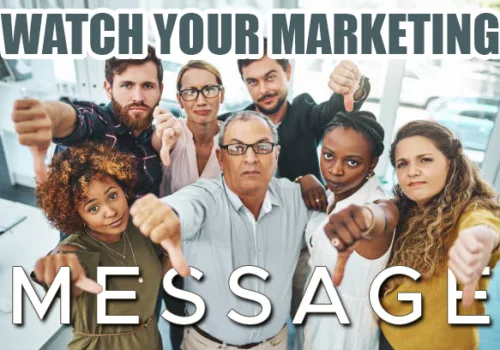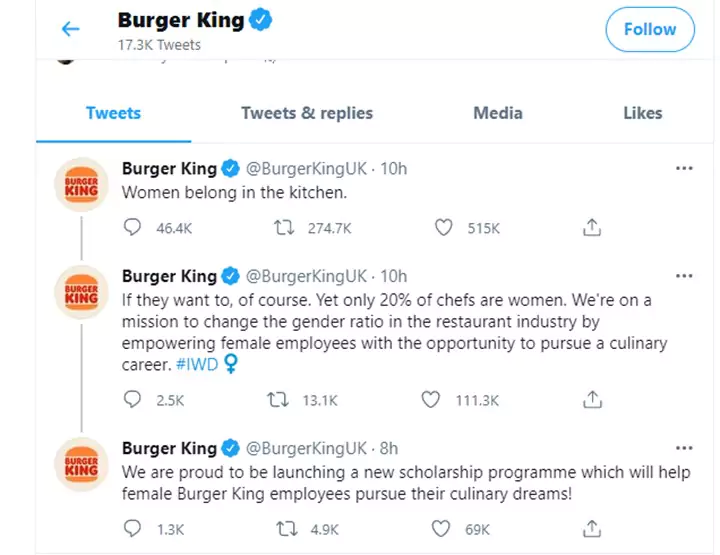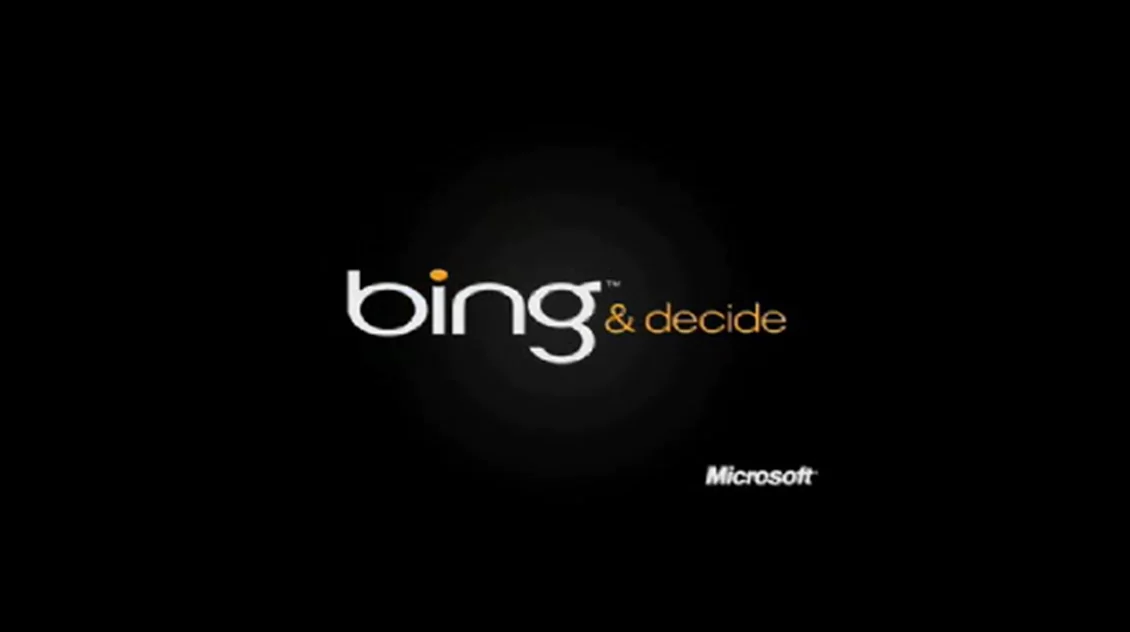
3 Marketing Fails and Lessons to Be Learned
Marketing is no easy job! Striking a balance between helpful and engaging content, yet ensuring ads and social posting accurately reflect your company culture, can be challenging for even the most experienced marketing professional. From time to time, this means a marketing effort (digital or otherwise) might not hit the mark. In such cases, companies like 309 Marketing Group return to the drawing board to figure out what works. However, some marketing blunders are hard to come back from. If you have to apologize for an ad you created, you know you’ve messed up! While 309 Marketing Group is thankful we haven’t made such a mistake (yet), we like to learn from those who have come before us. Here are some examples of marketing fails that we can learn from:

“Celebrating” Women’s Day with Burger King
On International Women’s Day in 2021, you might remember a social post many considered to be in poor taste for the holiday. Like many companies, Burger King in the UK attempted to be funny on Twitter (now X). They started a tweet thread with: “Women belong in the kitchen,” followed by a second tweet saying “If they want to, of course,” and a third tweet that introduced a new scholarship program that would help female Burger King employees “pursue their culinary dreams!” As expected, the tweet chain did not go over well with Twitter users.
Looking at the context of all the tweets together, it’s evident that Burger King didn’t believe “women belonged in the kitchen,” and the effort to offer female employees culinary scholarships was well intentioned. However, by separating the message into three individual tweets, most people never got past the first, resulting in significant backlash. And even if people saw all three, the joke was still seen as sexist and insensitive by many.
The Lesson: How you present a message on social media can differ vastly from platform to platform. The segmented approach to the tweet chain hurt Burger King because most just saw the first tweet and assumed BK was needlessly hurtful and offensive. However, even assuming people get the joke, relying on statements that illicit an adverse reaction (no matter how positive the latter half of the statement) is never a good idea.

Pepsi Steps into “Social Activism”
There’s nothing wrong with a company proudly espousing its views, especially if it connects with its audience. However, there’s a time and a place, and making any “social commentary” must be done tactfully. Unfortunately, Pepsi whiffed in its social activism when producing its infamous 2017 commercial with Kendall Jenner. The commercial has Jenner noticing an ongoing protest, where protesters and police seem to be in contention. Jenner, taking a Pepsi from a nearby cooler, marches to the front of the protest and hands it to one of the police officers. In a moment of unity, the officer takes a sip, a picture is taken, and the crowd cheers!
While Pepsi promoted this commercial as a message of global unity and peace, it came out at a time when very real riots were occurring monthly. The message of unity Pepsi was trying to relay came off as tone-deaf to activists. The commercial was also thought to trivialize Black Lives Matter protests that were ongoing nationwide. As a result, the criticism of the ad was harsh, with even Bernice King, the daughter of Martin Luther King Jr., tweeting, “If only Daddy would have known about the power of #Pepsi.” Fearing further backlash, Pepsi pulled the ad within 24 hours of its airing and issued an apology.
The Lesson: Using controversial topics and social issues to promote your products can backfire spectacularly. Even if you want to make a genuine statement using your ad, do your research to ensure the ad doesn’t come off as insensitive or inappropriate before releasing it to the public. Otherwise, you’re going to be doing more damage control than sales.

Just “Bing” It?
This marketing blunder is right up our alley, having to do with the (less) popular search engine from Microsoft, Bing. In the early 2010s, when Microsoft was first trying to get a slice of the “search engine” pie, they implemented an interesting marketing campaign. In marketing ads and materials, Microsoft began encouraging users to “Bing and Decide,” a not-so-subtle copy of the verbification of Google (Google it!).
For advertising, it’s common for marketers to borrow from competitor campaigns, imitating what worked for them to make it work for their own products or services. Unfortunately, “Bing and Decide” didn’t have the ring to it that “Google It” did, and the marketing push never produced results. Thankfully, unlike the last two fails that ended in apologies, Microsoft didn’t have to apologize to the public for their mistake. Rather, they couldn’t dent Google’s already sizeable market control and abandoned the campaign afterward.
The Lesson: While it’s okay to imitate what works, you don’t want to resemble what your competitors are doing too closely. Sometimes, it’s better to focus on your own unique message rather than ripping off someone else’s. And when something doesn’t work, switch gears! Microsoft suffered more because it didn’t immediately stop its campaign, even when it wasn’t producing results.
Don’t Miss with Your Marketing Strategy!
309 Marketing takes these examples of marketing failure as cautionary tales and applies the lessons from these mistakes to what we do for our own marketing strategies. Whether creating search-engine-optimized content, building your paid ad campaign, or promoting your company on social media, you can count on 309 Marketing Group for excellence in everything we do. To learn more about our company and our digital marketing services, call today at 309-213-9398.
